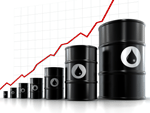|
Now it appears that those surveys might have asked the wrong question. Thanks to the sharp spike in oil prices that is working its way through the economy like a bad case of food poisoning, the price gap between green and conventional products has shrunk significantly. In some cases, the relationship has reversed, with sustainable products now costing less to produce than their conventional counterparts.
This switch is particularly noticeable in products made out of petroleum-based materials (think plastic plates), products that require lots of energy to produce (think paper), and those that are shipped long distances (Fiji Water, anyone?) Green alternatives, made out of plant-based materials, powered by renewable energy, and produced locally suddenly look financially attractive.
|












